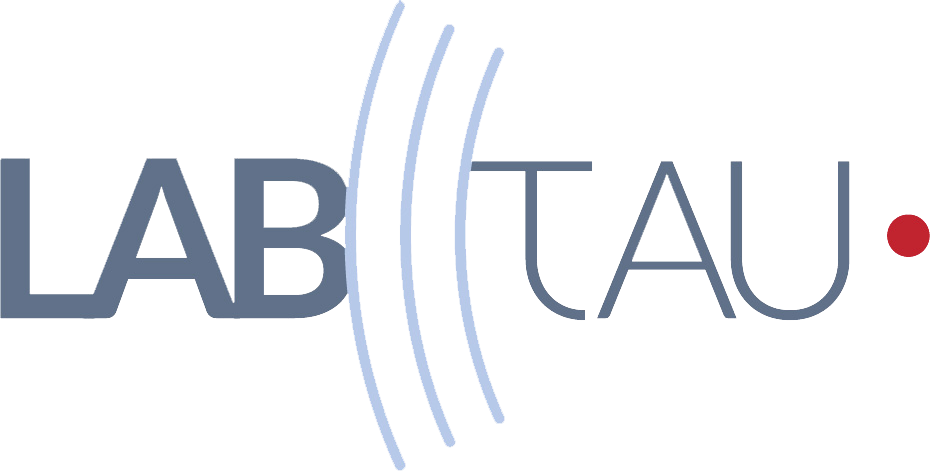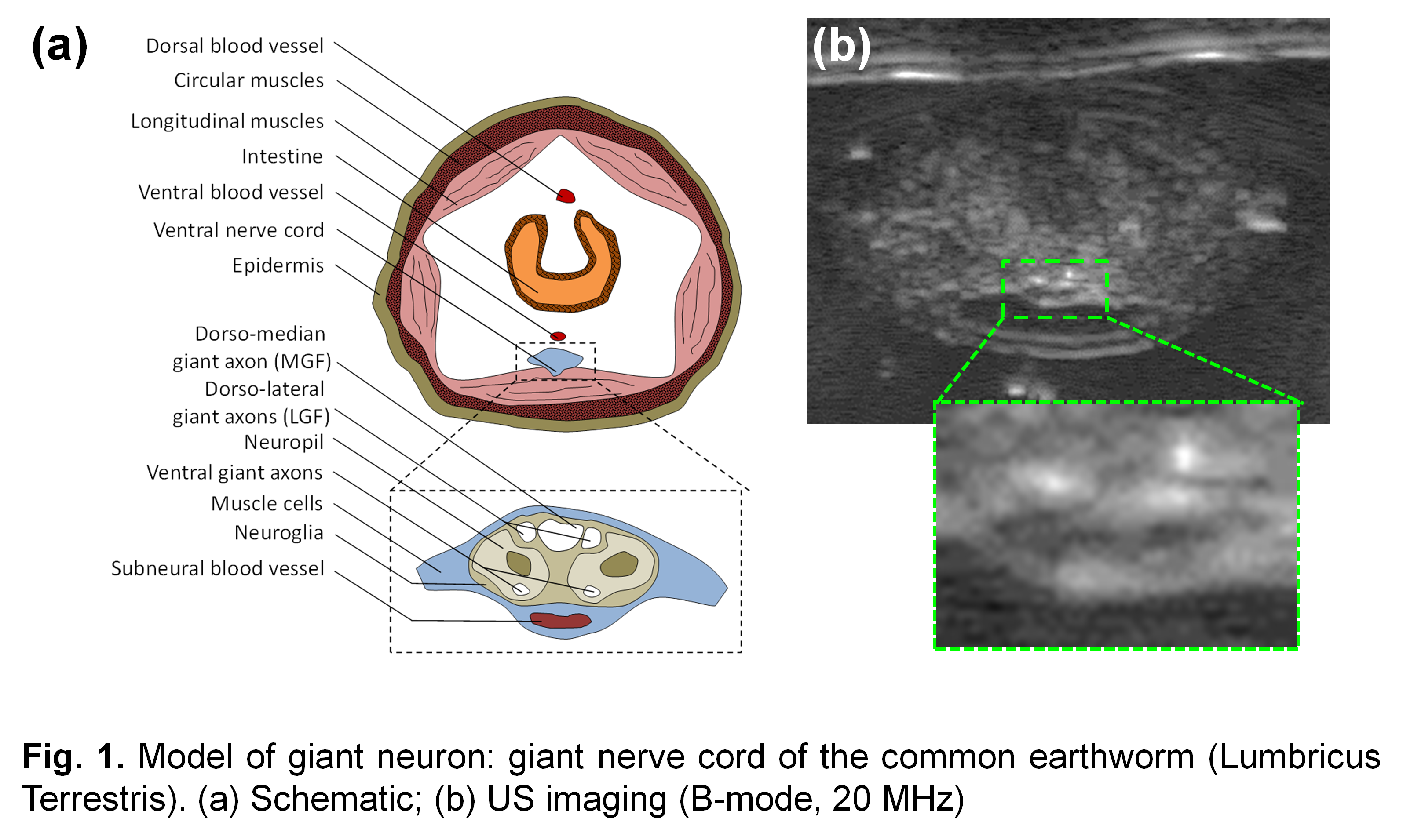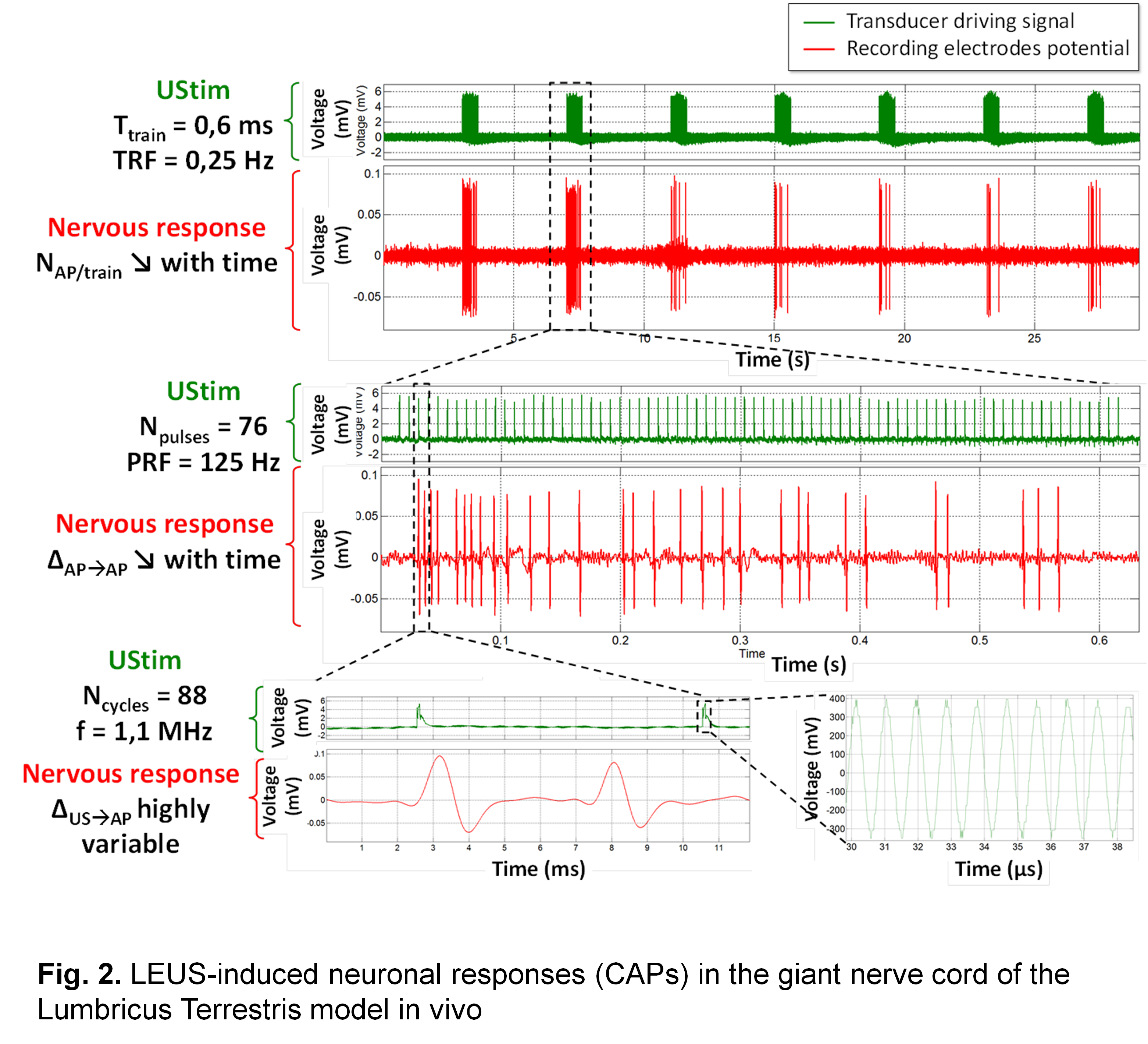Neuro stimulation
Ultrasound neurostimulation - Explorations – Envisaged applications: treatment of certain impairments (hearing, vision, pain)
Project Description
The only way to artificially induce brain activity has long been electrical stimulation. This technique is well-established for the management of various diseases (Parkinson, pain, epilepsy, treatment of deafness) but is particularly invasive (placement of subdural or deep brain electrodes, which can be complicated by the production of epileptic activities). Those past few years have seen the emergence of minimally-invasive technics with excitations of various origins (electric, magnetic), but associated to several limitations (targeting, selectivity, access in depth). Recent works have shown that Low Energy UltraSound (LEUS) could affect the activity of neurons from distance without needle insertion. The use of ultrasound for minimally-invasive deep neurostimulation may represent a revolution is this domain. However, the current knowledge on the biophysical mechanisms involved in LEUS neurostimulation is very limited and block potential transfer to the patient. The LabTAU laboratory is leading a new research programme in order to accelerate the emergence of ultrasound neurostimulation, in 2 main phases: 1) improve of our current knowledge on the biophysical mechanisms and their complex interactions (simple in-vitro/in-vivo nerve models, neural cell cultures, ex-vivo brain slices), 2) highlight ad hoc LEUS parameters for inducing controlled, selective, reproducible and safe neuronal stimulation (in-vivo brain). Ultimately, the objective is to develop minimally-invasive strategies of LEUS neurostimulation for modulating deep-seated sensory areas from distance, and consider future clinical applications (e.g. pain, audition). LabTAU is collaborating with LRTCA (preclinical and clinical expertise in neurosurgery) and the INSERM U1129 (preclinical and clinical expertise on neural electrophysiology: in-vitro/ex-vivo brain models).
Funding sources
- SATT LUTECH (LRTCA)
- ANR T-ERC 2016 (LabTAU, INSERM)
Staff
LabTau Staff
- PIs: Apoutou N’DJIN (CR LabTAU, INSERM), Jean-Yves CHAPELON (DR LabTAU, INSERM), Alexandre CARPENTIER (PUPH, APHP, LRTCA)
- Co-PIs: Jean-Louis MESTAS (CR LabTAU, INSERM)
- Researchers: Ivan SUAREZ (Post-Doc, LabTAU, INSERM)
- Students: Jérémy VION (Doctorant, LabTAU, INSERM)
- Engeeners/Techniciens : Magali PERIER (AI, LabTAU, INSERM)
Collaborations
- PIs: Alexandre CARPENTIER (PUPH, APHP, Research laboratory in advanced surgical technologies, LRTCA team: http://www.lrtca.org/)
- Co-PIs: Gilles HUBERFELD (MCU-PH, UPMC, INSERM, U1129, Infantile Epilepsy and Brain Plasticity team: http://www.idf.inserm.fr/rubriques/les-laboratoires/implantations/structures-de-recherche-paris-5/annexes/umr-1129)
Publications
-
Vion-Bailly, J, N'Djin WA, Mestas JL, Chapelon JY. Feasibility and main mechanisms underlying in vivo ultrasound neurostimulation of the ventral nerve cord's giant axons of lumbricus terrestris. Ultrasonics Symposium (IUS) Proceedings; 2017 IEEE International: 1-4. DOI: 10.1109/ULTSYM.2017.8092552






